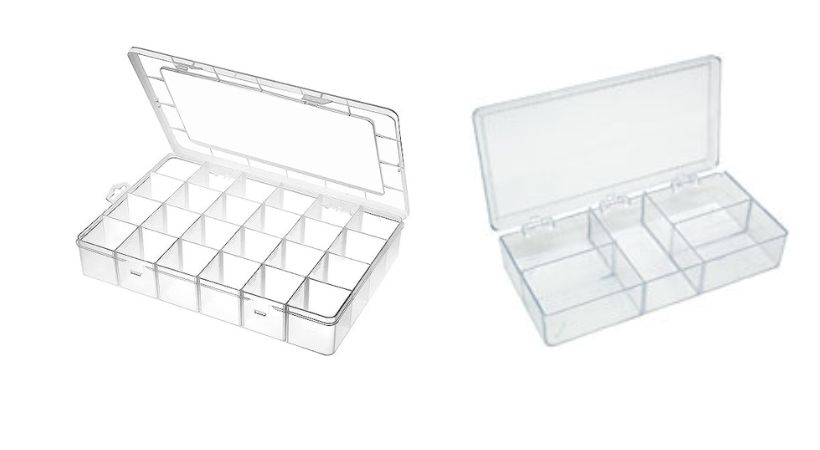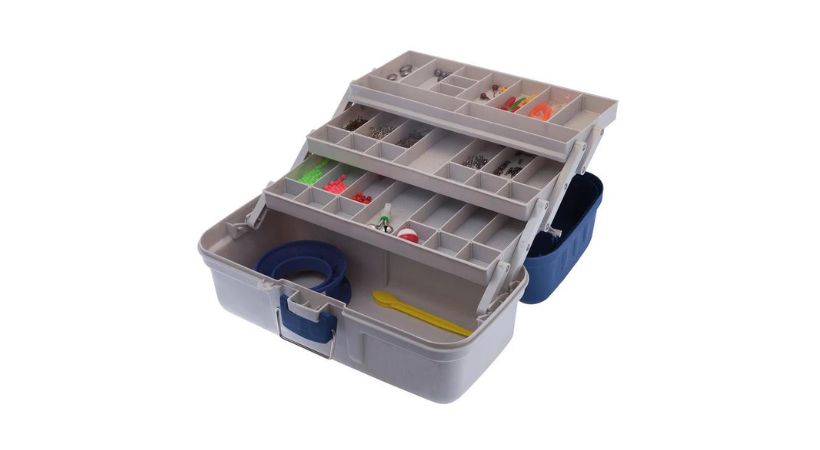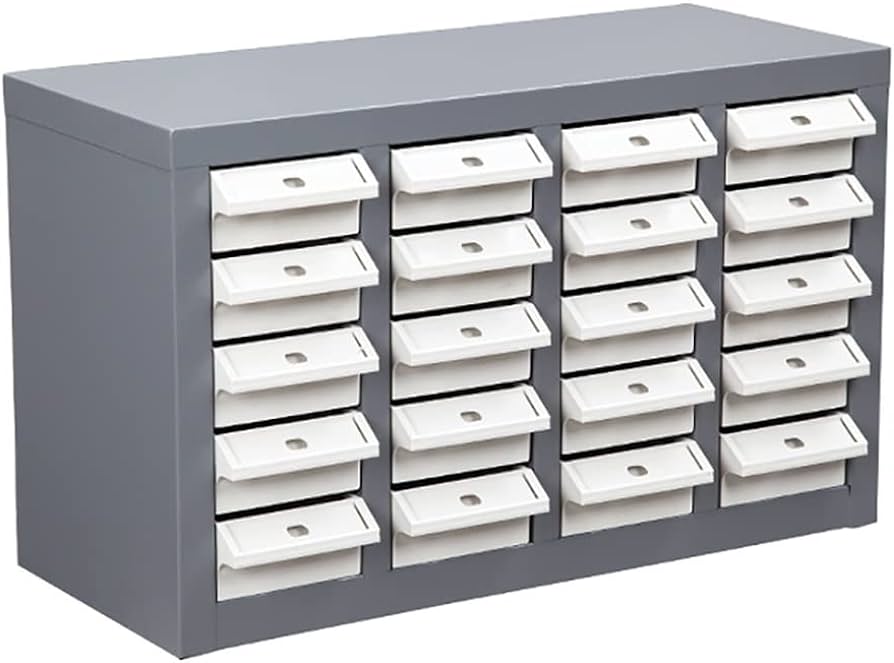Developing different electronic projects and prototypes, your collection of breadboards, and other electronic components grows, and keeping them organized and easily accessible can become challenging.
You have to store the breadboard and associated components to be safe and easily accessible. Different methods and storage components can be used to store breadboard and various elements. The tackle box, drawer cabinets, plastic compartment box, and DIY storage solutions like making your box with wood for each component and breadboard are some solutions for storing breadboard and components.
In this article, we will discuss several storage solution for breadboards and components.
Storage solutions
Breadboard is a tool used in electronics to verify and test the circuit’s performance. Before the permanent soldering, the testing of the circuit is essential to avoid any issues.
It is rectangular have many holes that are arranged in rows and columns. The components are inserted into these holes according to the circuit diagrams.
If want to learn more about the breadboard and its layout, you can check out our article:
As the breadboards are used for prototyping so in prototyping different electronic components and tools are required. Arrangement and storage of these components and tools is very challenging, especially for beginners.
Here we’ll talk about some storage solutions that will help you store and arrange your different electronic components, breadboard, and related tools.
1. Plastic compartment box
Storing the breadboard and associated components in the plastic compartment box is a common and effective way to organize and protect them.
Plastic compartment boxes not only organize but also protect the breadboard and components. This is one of the simple and easy ways of storage.
It is a plastic box with different small compartments or we can say small rooms where you can store your different electronic components and breadboards. These boxes are available in different sizes with different size compartments.

The good thing about these boxes is they are transparent and you see where is which component. The box with adjustable compartment boxes is also available so you can adjust the compartment according to the component’s size.
You have to select a box according to your need and with adjustable compartments. Now group the different components and place them in the small compartments.
For the breadboard make sure you reserve a larger compartment to avoid damage. If you have breadboards with ongoing projects, consider using larger compartments or separate boxes to avoid disturbing the setup.
Keep the jumper wires organized in a separate portion of the box. Particle you can also save components and breadboards like this:
- In top compartments place resistors according to their values and label them.
- In the next compartments, place the capacitors sorted by type and value.
- Put the small breadboards in the middle compartment.
- In this way place all the related components like LEDs, transistors, and diodes in other compartments.
These are general tips, you can be organized and store your breadboards and associated components according to the box and box compartment size.
If you are using more than one compartment box, make sure you label each one for easy access.
2. Tacklebox
Tackle box can also be used to store breadboards and other components. It is used for organizing fishing gear and can be repurposed effectively for electronic components and prototyping equipment.

It also has various trays and each tray has various compartments, which will be used to store components and breadboards.
The tackle boxes are portable and can protect delicate electronic components from dust, physical damage, and moisture.
Different types of tackle boxes are available, so according to your requirements, select a tackle box with trays. Now I can give you a general way how to set and store your components and breadboards in the tackle box.
- Put the most frequently used tools and components in the first tray.
- In the middle tray, assign each compartment to the different components like resistors, transistors, diodes, and other electronic components.
- Put the larger tools such as breadboard, multimeter, or power supplies in the last tray.
By using a tackle box, you can create a neat, portable, and organized system for your electronic projects, making it much easier to find and use the components and tools you need.
3. Drawer cabinets
Storing breadboards and associated components in drawer cabinets is a practical and organized way to keep your electronics workspace tidy.

There are different drawers in the cabinet. They also come with a compartment in each drawer to store different small components.
Drawer cabinets are available in different forms, choosing is up to you because you have to select an option that best suits your situation. Always dedicate a larger drawer for the breadboard.
If you have different size breadboards you use a divider to separate them. One drawer can be divided the drawer to place small components like resistors, capacitors, jumper wires, etc.
For easy accessibility label each drawer and its compartment. Give a small and meaningful name to each drawer and portion.
Make sure to arrange components in such a way that it does not affect your workflow. Keep the frequently used components at arm’s reach.
The drawer cabinets are an easy and effective solution for storing breadboard and components safely but these consume space and are not portable. So you have to use another box if want to work at another location.
Consider every aspect of the drawer cabinets and requirements before buying them.
4. DIY storage solutions
There are DIY storage solutions for the storage of breadboards and other components. Several solutions are there to create it by yourself.
You can create cabinets using wood according to the components and tools you have. The size can be customized and the number of cabinets will also be according to your requirements.
Another idea is the use of cardboard, in this, you can also customize the portion size and numbers. Small parts like resistors and capacitors can be kept in plastic bins or containers.
By implementing these DIY storage solutions, you can keep your breadboard and associated components organized and easily accessible.
Tips and tricks
Here are some tips and tricks that will help you while you are storing the breadboard and other associated components.
- To keep track of what you have and where it is, label each compartment. Label it with a small and meaningful name.
- If you have more than two boxes of components, label each one with components that have.
- Make compartments or use dividers to separate components. This will help you to easily identify the components and keep the workplace organized.
- The components that are used most, keep them at easy-to-reach locations.
- Store the components according to their types, and values.
- Regularly clean and organize your workplace by putting components in its storage boxes.
You can make sure that your breadboards and components are always easily accessible and arranged by using these helpful tips and tricks.
Conclusion
Breadboard is an essential tool in electronics to prototype a circuit and test its performance.
For efficiency, and the longevity of your electronics projects the Proper storage for breadboards and associated components is crucial.
There are several ways to store breadboard and different components effectively
- Plastic compartment boxes
- Tackle boxes
- Drawer cabinets
- DIY solutions
Above are some storage solutions, choose the one that best suits you and fulfills all your requirements.
Make sure you label each compartment and box with a clear name and keep the frequently used tools and components at the top.
These storage solutions out there can help you keep your workspace organized and efficient.
This was all about the storage solution for breadboards and components, choose the one solution from above and start organizing your workplace.
Thank you and stay blessed…
Other useful posts:
